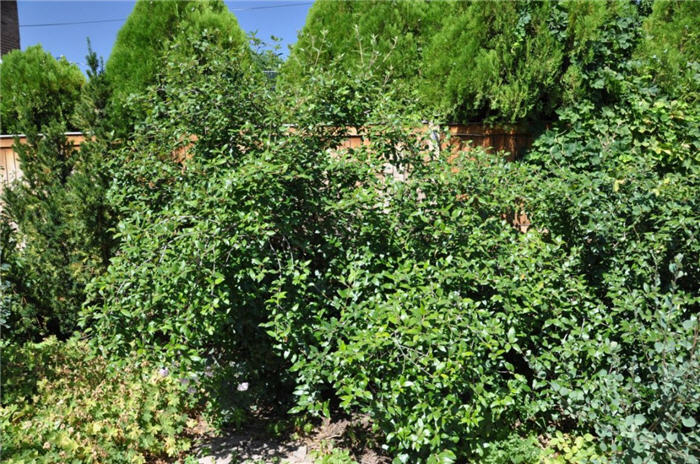| Botanical Name: Viburnum x 'Emerald Triumph' | |
| Common Name: Emerald Triumph Viburnum |

-
Anatomy
-
Culture
-
Design
Plant Type
Shrub
Height Range
6-12'
Flower Color
White
Flower Season
Spring
Leaf Color
Dark Green
Bark Color
Grey
Fruit Color
Black, Red
Fruit Season
Winter, Fall
Sun
Full, Half
Water
Low, Medium
Growth Rate
Moderate
Soil Type
Sandy, Clay, Loam, Rocky, Unparticular
Soil Condition
Average, Rich, Well-drained
Soil pH
Neutral, Basic
Adverse Factors
n/a
Design Styles
English Cottage, Formal, Woodland
Accenting Features
Fall Color, Fragrance, Showy Flowers
Seasonal Interest
Spring, Fall
Location Uses
Background, Shrub Border, Foundation, Walls / Fences
Special Uses
Hedge, Screen, Wind Break
Attracts Wildlife
Birds, Butterflies
Information by: Stephanie Duer
Photographer:
Photographer:
-
Description
-
Notes
‘Emerald Triumph’ is the result of a cross between V. ‘Allegheny’ and V. burejaeticum. This is a compact, rounded, deciduous shrub that typically matures to 6 to 8 feet tall and as wide. Showy white flowers in flat clusters bloom in late April to May. Flowers give way to fruits (drupes) that mature to bright red in late summer but turn black by autumn. Leathery, glossy dark green leaves turn bronze to dark red in fall. Provides a pleasant screen or hedge, or use in a shrub or foundation border.
Grow in well-drained soil in full sun to part shade. Prefers loamy soils, but tolerates wide range of soils, including clay soils as long as they are well drained. Established plants prefer regular watering but have some drought tolerance. Prune as needed immediately after flowering, but avoid shearing as it makes the shrub sort of twiggy and woody (see Guides).